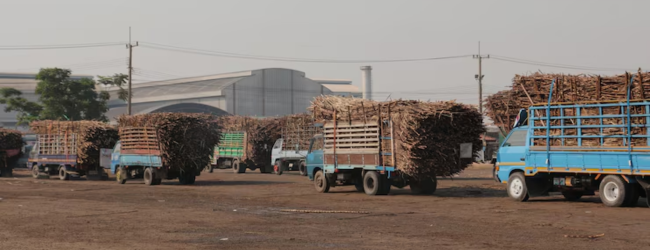Table of contents
India, a land of diverse landscapes and demographics, holds a significant portion of its population in rural areas. These rural markets, often overlooked, represent a vast and increasingly important consumer base with unique needs, aspirations, and purchasing behaviors. Rural marketing, therefore, is not merely an extension of urban marketing strategies but a specialized discipline that requires a deep understanding of the rural ecosystem. This blog delves into the intricacies of rural marketing, exploring its definition, significance, various types, the crucial “Four A’s” framework, the challenges involved, the immense opportunities it presents, and key takeaways for businesses seeking to tap into this burgeoning market.
What is Rural Marketing?

Rural marketing encompasses all activities involved in planning, developing, promoting, distributing, and selling goods and services to the rural population. It also includes the reverse process of bringing rural products and services to urban markets. Unlike urban marketing, rural marketing necessitates a nuanced approach that considers the unique socio-economic, cultural, and geographical characteristics of rural consumers. Factors such as literacy levels, income patterns, infrastructure limitations, traditional values, and community influence play a significant role in shaping consumer behavior in rural areas. Effective rural marketing involves understanding these nuances and tailoring marketing strategies accordingly.
Importance of Rural Marketing
The significance of rural marketing in India cannot be overstated due to several compelling reasons:
- Large and Growing Consumer Base: A substantial portion of India’s population resides in rural areas, representing a massive and continuously expanding consumer market with increasing disposable income.
- Untapped Potential: Many rural markets remain relatively underserved, presenting significant growth opportunities for businesses across various sectors.
- Increasing Purchasing Power: With agricultural advancements, government schemes, and increased awareness, the purchasing power of rural consumers is steadily rising, making them attractive to businesses.
- Changing Consumption Patterns: Rural consumers are increasingly aspirational and are adopting new products and services beyond basic necessities, mirroring trends observed in urban areas, albeit at a different pace.
- Contribution to Economic Growth: A thriving rural market fuels economic growth by driving demand, supporting local industries, and creating employment opportunities.
- Reverse Marketing Potential: Rural areas are rich in unique products, handicrafts, agricultural produce, and talent that can be marketed to urban and even international markets, contributing to rural livelihoods.
- Market Diversification: For businesses facing saturation in urban markets, rural India offers a significant avenue for diversification and expansion.
- Social Impact: Engaging with rural markets responsibly can contribute to the economic empowerment and social development of rural communities.
Types of Rural Marketing
Rural marketing can be broadly categorized into two main flows:
1. Marketing of Agricultural Inputs and Rural Produce (Reverse Marketing):

This involves marketing goods and services to the rural population for agricultural purposes and rural development. This includes:
- Agricultural Inputs: Seeds, fertilizers, pesticides, farm machinery, irrigation equipment, animal feed, veterinary services.
- Rural Infrastructure: Construction materials, tools, and equipment for building homes, roads, and other infrastructure.
- Financial Services: Loans, insurance, and banking facilities tailored to rural needs.
- Education and Healthcare: Services aimed at improving literacy, skills, and health in rural areas.
- Communication and Technology: Mobile phones, internet services, and related technologies.
2. Marketing of Industrial/Urban Products and Services in Rural Areas (Forward Marketing):

This involves marketing goods and services produced in urban or industrial centers to the rural consumers. This includes a wide range of products such as:
- Consumer Goods: FMCG (soaps, detergents, personal care products, packaged foods), consumer durables (televisions, refrigerators, washing machines, two-wheelers), clothing, footwear.
- Services: Telecommunications, entertainment, financial services, healthcare, education.
- Other Products: Building materials, agricultural tools (smaller implements), and various other industrial and manufactured goods.
ALSO READ | Avocado Farming in India: A Complete Guide
Four A’s of Rural Marketing
To effectively navigate the complexities of rural marketing, businesses need to focus on the “Four A’s” framework, which are crucial for success in these markets:
- Affordability: Rural consumers often have lower disposable incomes compared to their urban counterparts. Therefore, products and services need to be priced affordably and offered in smaller, convenient pack sizes to suit their budgets. Value-for-money is a key consideration.
- Accessibility: Reaching the geographically dispersed rural population poses a significant logistical challenge. Effective distribution channels, including leveraging local networks, establishing rural retail outlets, and utilizing mobile vans, are crucial for making products and services readily available.
- Awareness: Traditional media like television and radio still hold significant influence in rural areas. However, newer channels like mobile marketing, video vans, and community gatherings are also gaining traction. Marketing messages need to be simple, culturally relevant, and delivered through trusted sources and appropriate media.
- Availability: Simply making products accessible is not enough; they need to be consistently available at the right place and at the right time. Efficient supply chain management and inventory control are essential to meet the demand in rural markets.
💡Pro Tip: If you want to start a business but have too many doubts, connect with a business expert from Boss Wallah for guidance – https://bw1.in/1116
Challenges in Rural Marketing
Despite the immense potential, rural marketing in India presents several unique challenges:
- Diverse Socio-Economic and Cultural Landscape: Rural India is not a homogenous market. Variations in income levels, literacy rates, languages, customs, and traditions necessitate localized marketing strategies.
- Poor Infrastructure: Inadequate transportation, storage facilities, communication networks, and power supply can hinder distribution, logistics, and marketing communication efforts.
- Low Literacy Levels: Communication strategies need to be simple, visual, and rely heavily on interpersonal communication and demonstrations.
- Seasonal Demand: Agricultural income and, consequently, purchasing power in rural areas can be heavily dependent on agricultural cycles and monsoon patterns, leading to seasonal fluctuations in demand.
- Traditional Mindsets: Resistance to new products and practices, coupled with strong community influence, can make adoption challenging.
- Media Reach and Fragmentation: While television penetration is increasing, reaching the entire rural population through a single medium remains difficult. Media consumption patterns vary significantly across regions.
- Accessibility and Distribution Costs: Reaching remote villages and maintaining an efficient distribution network in rural areas can be expensive and logistically complex.
- Counterfeit Products and Price Sensitivity: The prevalence of counterfeit products and high price sensitivity require businesses to focus on building trust and offering genuine value.
- Limited Market Research Data: Availability of reliable and comprehensive market research data for rural areas can be a constraint for informed decision-making.
Opportunities in Rural Marketing in India
Despite the challenges, the opportunities in rural marketing in India are substantial and continue to grow:
- Increasing Disposable Income: Rising agricultural productivity, government support schemes, and migration for employment are contributing to higher disposable incomes in rural households.
- Growing Aspirations: Exposure to media and urbanization is fueling aspirations for better lifestyles and a wider range of products and services among rural consumers.
- Digital Penetration: The rapid increase in mobile phone usage and internet penetration is creating new avenues for communication, e-commerce, and digital marketing in rural areas.
- Government Focus on Rural Development: Government initiatives aimed at improving rural infrastructure, education, healthcare, and financial inclusion are creating a more conducive environment for businesses.
- Evolving Consumption Patterns: Rural consumers are gradually shifting from basic necessities to discretionary spending on consumer durables, entertainment, and personal care products.
- Untapped Market Segments: Niche rural segments with specific needs and preferences offer opportunities for targeted marketing.
- Leveraging Local Influencers and Networks: Utilizing community leaders, local influencers, and self-help groups can be an effective way to build trust and promote products.
- Reverse Marketing Potential: Tapping into the rich pool of rural arts, crafts, agricultural produce, and unique skills for urban and global markets.
- Technological Innovations: Innovations in logistics, supply chain management, and digital communication are making it easier and more cost-effective to reach rural consumers.
Key Takeaways
- Rural marketing is a specialized field focused on understanding and serving the unique needs of the rural consumer base in India.
- It involves both marketing products and services to rural areas and bringing rural produce to urban markets.
- The “Four A’s” framework – Affordability, Accessibility, Awareness, and Availability – is crucial for success in rural marketing.
- While challenges like infrastructure limitations and diverse demographics exist, the opportunities presented by the large and growing rural market are immense.
- Businesses need to adopt tailored strategies that consider the socio-economic, cultural, and geographical nuances of rural consumers.
- Digital penetration and government initiatives are creating new avenues and a more favorable environment for rural marketing.
Need Expert Guidance?
Starting a business can be challenging, but you don’t have to do it alone! At Boss Wallah, our 2,000+ business experts are ready to provide valuable insights and guidance. Whether you need help with marketing, finance, sourcing, or any other area of any business, our business experts are here to help you succeed- https://bw1.in/1116
Confused about Which Business to Start?
Want to start your own business but unsure which one to choose? Explore Boss Wallah, where you’ll find 500+ courses by successful business owners, featuring practical, step-by-step guides on starting and growing various businesses. Find your perfect business idea today – https://bw1.in/1111
Conclusion
Rural marketing in India is no longer a peripheral activity but a central pillar for businesses seeking sustainable growth and market expansion. By understanding the unique characteristics of rural consumers, addressing the existing challenges with innovative solutions, and capitalizing on the vast opportunities, businesses can unlock the immense potential of India’s hinterland. A customer-centric approach, coupled with a deep understanding of the “Four A’s” and a commitment to building trust and value, will be key to success in this dynamic and increasingly significant market.
Frequently Asked Questions (FAQs)
- Is rural marketing different from urban marketing?
- Yes, rural marketing requires a different approach due to variations in income levels, literacy, infrastructure, cultural nuances, and media consumption patterns compared to urban areas.
- What are some effective communication strategies for rural markets?
- Effective strategies include using simple and visual messages, leveraging traditional media like television and radio, utilizing mobile marketing, video vans, community gatherings, and building trust through local influencers.
- How can companies make their products affordable for rural consumers?
- Strategies include offering smaller and lower-priced pack sizes, focusing on value-for-money propositions, and exploring local sourcing and manufacturing to reduce costs.
- What are the key distribution challenges in rural marketing?
- Key challenges include poor transportation infrastructure, dispersed population, lack of organized retail, and the need for efficient last-mile delivery solutions.
- How is the increasing digital penetration impacting rural marketing?
- Increased mobile phone and internet usage are creating new opportunities for digital marketing, e-commerce, and providing information and services to rural consumers.
- What role do local influencers and community leaders play in rural marketing?
- They often hold significant trust and influence within their communities and can be effective in building brand credibility and promoting products.
- What kind of products have high demand in rural markets?
- Demand is growing for a wide range of products, including FMCG, consumer durables (especially two-wheelers and electronics), agricultural inputs, and increasingly, financial and digital services.
- How can companies build trust with rural consumers?
- Building trust requires consistent product quality, transparent communication, addressing their specific needs, engaging with the community, and demonstrating a long-term commitment to the rural market.


